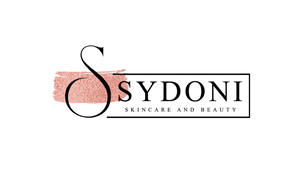What is Acne? Understanding the Different Types and Best Practices for Clearer Skin-by Lynn Jenkins
What is Acne?
Acne is a common skin condition that affects millions of people worldwide. It occurs when hair follicles become clogged with oil, dead skin cells, and bacteria. Acne can manifest in various forms, including pimples, blackheads, whiteheads, cysts, and nodules.
Types of Acne
1. Whiteheads: These are small, flesh-colored bumps that appear on the skin's surface when hair follicles are clogged with oil and dead skin cells. They are closed comedones and do not have an opening to the skin's surface.
2. Blackheads: Similar to whiteheads, blackheads are also clogged hair follicles. However, they have an open surface, which allows the trapped oil and dead skin cells to oxidize and turn black.
3. Papules: Papules are small, red, and inflamed bumps that occur when the walls of hair follicles break down due to excess oil and bacteria. They are often tender to the touch.
4. Pustules: Pustules are similar to papules but contain pus at their tips. They appear as red bumps with a white or yellow center.
5. Cysts: Cysts are large, painful, and pus-filled lumps that form deep within the skin. They can cause scarring and should be treated by a dermatologist to prevent further complications.
6. Nodules: Nodules are hard, painful, and deep-seated lumps that develop beneath the skin's surface. They are often a result of severe acne and can leave scars if not treated properly.
Best Practices for Clearer Skin
1. Maintain a Consistent Skincare Routine: Cleanse your face twice a day with a gentle cleanser suitable for your skin type. Avoid harsh scrubbing, as it can irritate the skin and worsen acne.
2. Avoid Touching Your Face: Touching your face can transfer bacteria and oil from your hands to your skin, leading to breakouts. Keep your hands away from your face as much as possible.
3. Use Non-Comedogenic Products: Choose skincare and makeup products labeled as non-comedogenic, meaning they won't clog your pores. Look for oil-free and water-based formulas.
4. Avoid Squeezing or Picking at Acne: Squeezing or picking at acne can cause inflammation, infection, and scarring. It's best to leave it alone or seek professional help.
5. Protect Your Skin from the Sun: Use a broad-spectrum sunscreen with an SPF of 30 or higher to protect your skin from harmful UV rays. Sun exposure can worsen acne and lead to hyperpigmentation.
6. Manage Stress Levels: Stress can trigger hormonal changes that contribute to acne breakouts. Practice stress-management techniques such as exercise, meditation, and getting enough sleep.
7. Consult a Dermatologist: If over-the-counter treatments and home remedies don't improve your acne, it's advisable to consult a dermatologist. They can prescribe medications or recommend specialized treatments tailored to your skin's needs.
By understanding the different types of acne and following these best practices, you can take control of your skin and achieve a clearer complexion. Remember, everyone's skin is unique, so it may take time to find the right skincare routine that works for you. Be patient and consistent, and don't hesitate to seek professional help if needed.
